The lilac oysterling mushroom (Panus conchatus) is a beautiful, delicate purple mushroom that fruits across North America. It looks similar to the highly sought after edible oyster mushroom, Pleurotus spp. The fact that both their names have oyster in them makes things even more confusing.
Lilac oysterling mushrooms are not a good edible species, so finding this one is often a disappoint for foragers. However, it is still a neat find, especially when it is young and that outstanding lilac color.
- Scientific Name: Panus conchatus
- Common Names: Lilac Panus, Purple Oysterling, Lilac Shell Fungus
- Habitat: Dead hardwoods
- Edibility: Not edible
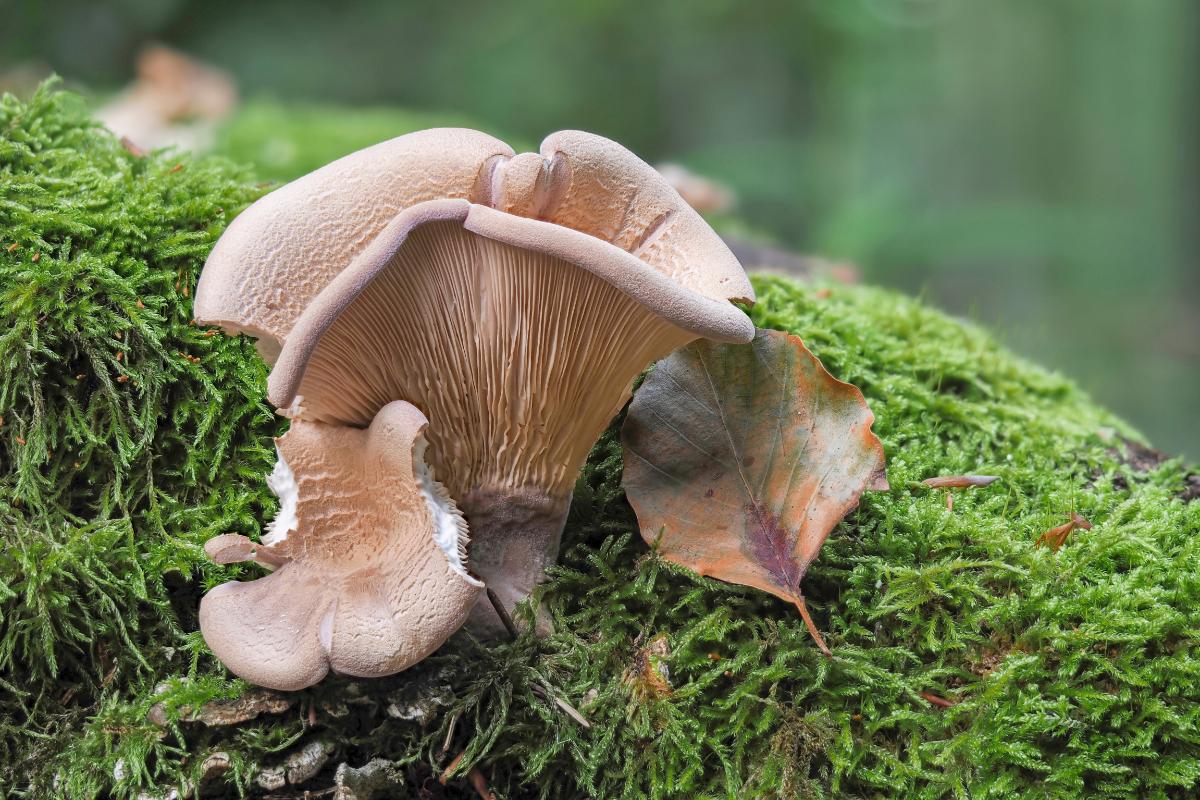
Jump to:
All About The Lilac Oysterling
The lilac oysterling belongs to the Polyporaceae family within the order Polyporales. This classification might surprise some mushroom enthusiasts because most polypore mushrooms have pores, not gills. But, Panus species are more closely related to polypores than to typical gilled mushrooms. This is an example of convergent evolution.
The genus name Panus derives from Greek and means “a swelling or tumor” (which refers to how the mushrooms grows). The epithet conchatus comes from Latin and means “shell-like.”
These mushrooms resemble the well-known edible oyster mushroom (Pleurotus species), but it is not an edible species. The flesh is tough and leathery. The fruiting times of lilac oysterlings and true oyster mushroom species overlap, so it is crucial to examine your finds carefully.
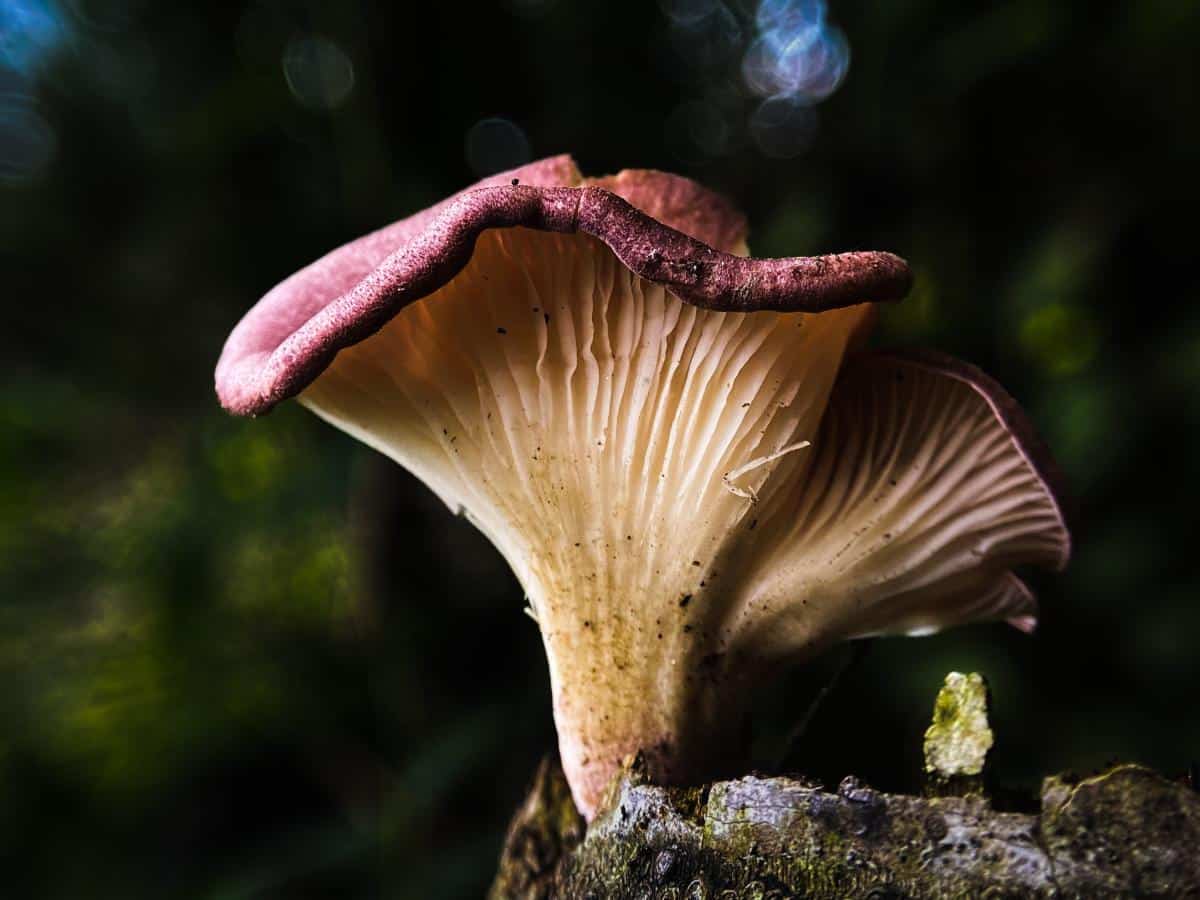
Lilac Oysterling Identification
Season
The lilac oysterling fruits in eastern North America from April to August. On the west coast, it shows up from December to June. These mushrooms often fruit on the same dead wood year after year.
Habitat
These mushrooms love dead or dying hardwood trees, especially oak, beech, and poplar. The lilac oysterling grows right out of the wood; it never grows from soil. It is most common on dead logs, stumps, and branches in deciduous forests.
Lilac oysterlings mushrooms tend to grow in dense overlapping clusters. However, they also might grow individually or in small scattered groupings.
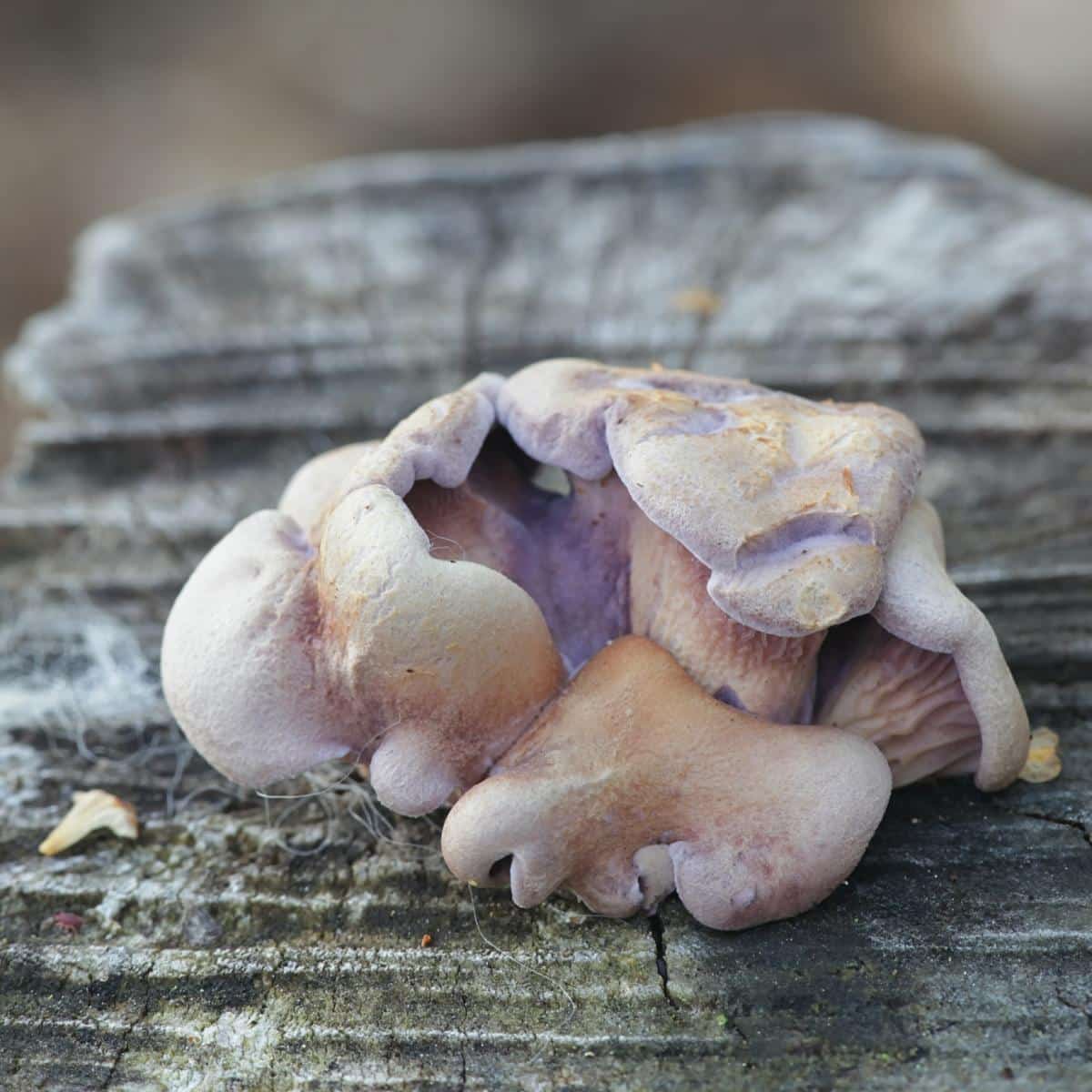
Identification
Cap
The caps of this mushroom are 1-3 inches wide with a fan or shell-like shape. The younger specimens are bright lilac to purple. With age, though, the colors fade into tan or brown. The caps of younger mushrooms are dry and slightly velvety. As they age, they get smoother. The edges of the cap are usually wavy or lobed.
When the mushrooms are just emerging, they look like thick knobs emerging from the tree. They do not have their quintessential shell shape yet and it can be hard to see the gills. The stem usually is blushed lilac, which gives the species away.
Gills
The gills are decurrent, which means they run partway down the stem. The gills are close together and narrow. They start with the same lilac color as the cap and then turn to pale tan with age.
Stem
The stem of the lilac oysterling is short and stubby. It is off-center or connects sideways to the cap. The stem is solid and firm and also lilac, like the cap and gills when it is young. And, like the cap and gills, it also fades to light tan with age. Sometimes, there isn’t much of a stem at all, which makes the mushroom look stemless.
Taste and Smell
These mushrooms have a mild, pleasant aroma. The taste is mild to slightly bitter.
Flesh Color and Staining
The flesh of this mushroom is whitish to pale lilac. It does not change color or stain when cut or bruised. As the mushroom ages, its texture becomes tougher.
Spore Print
The spore print is white to cream-colored.
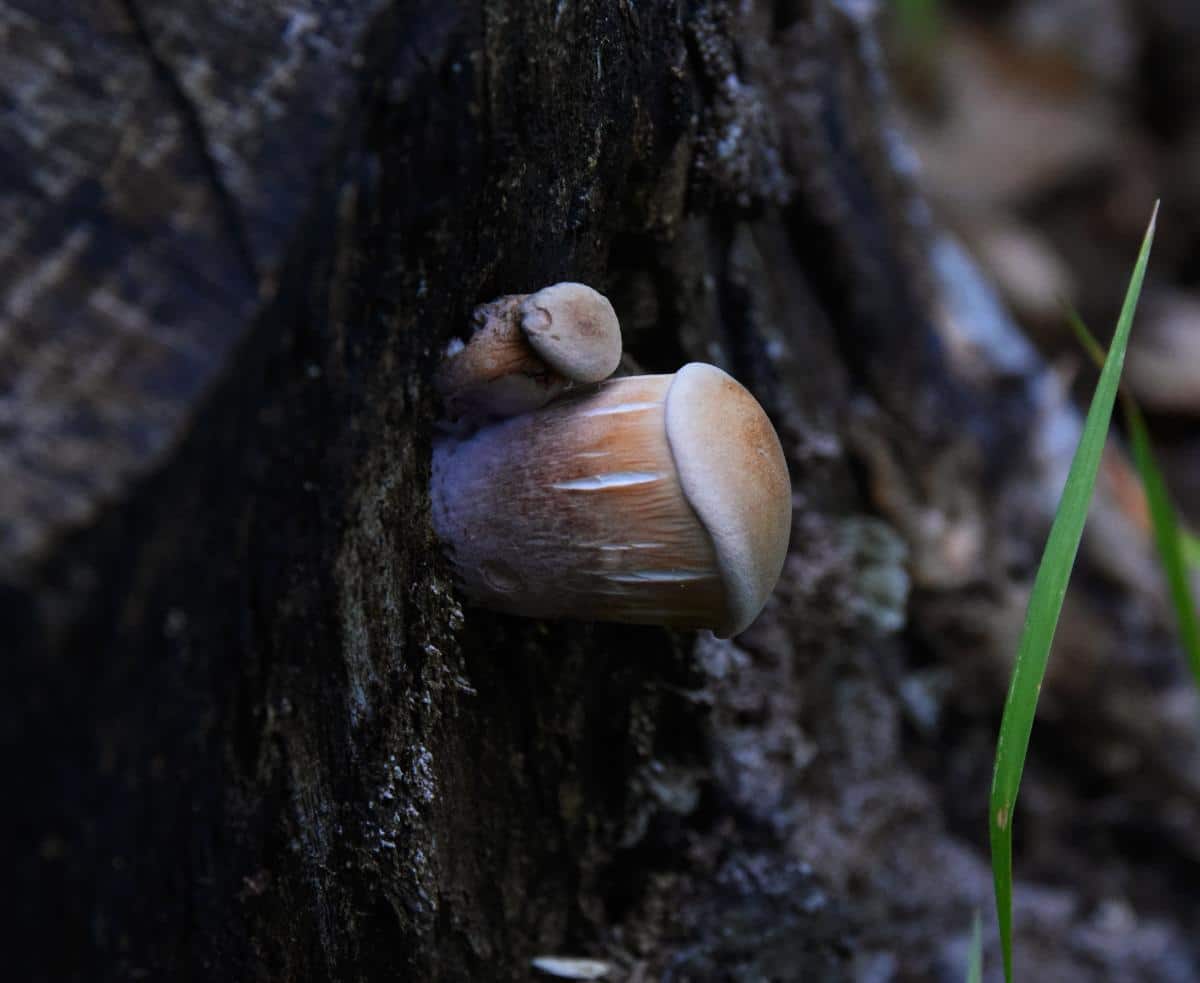
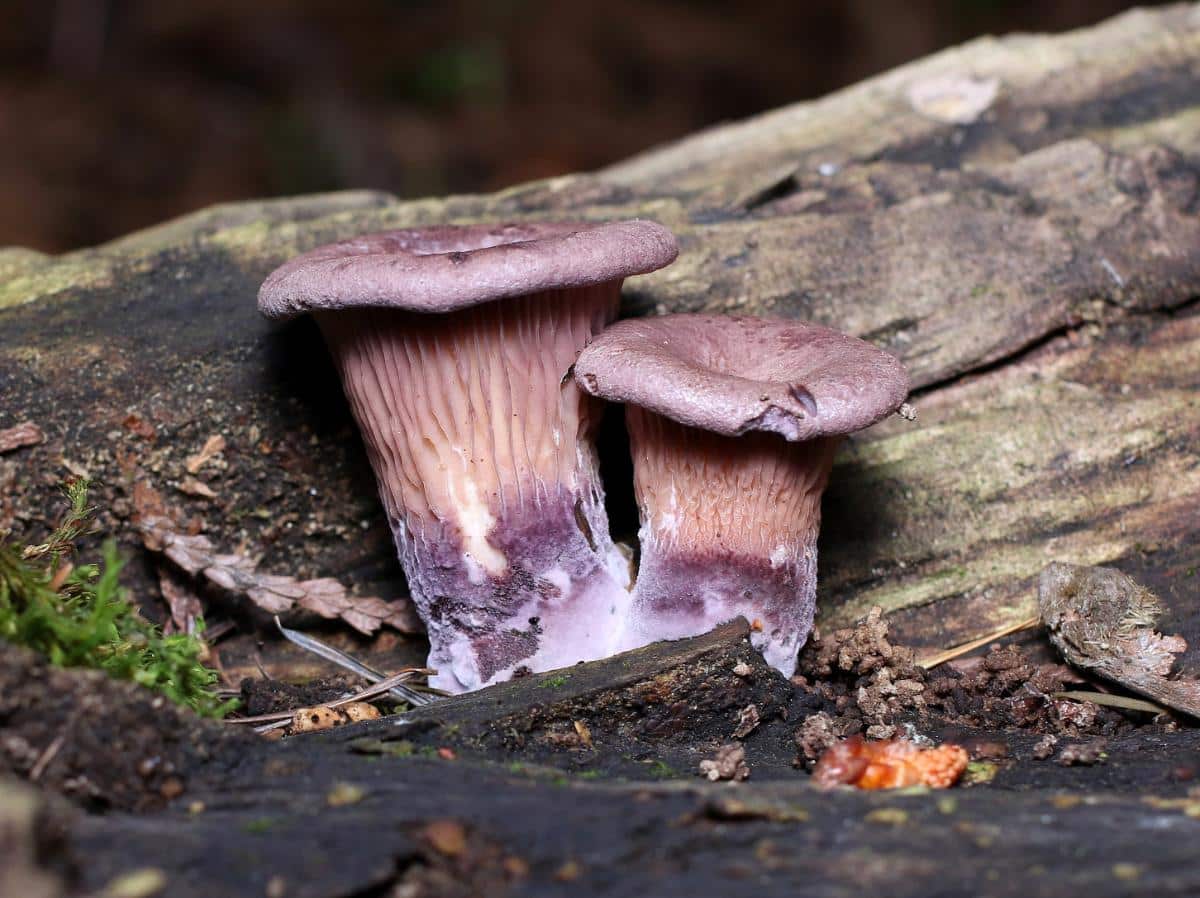

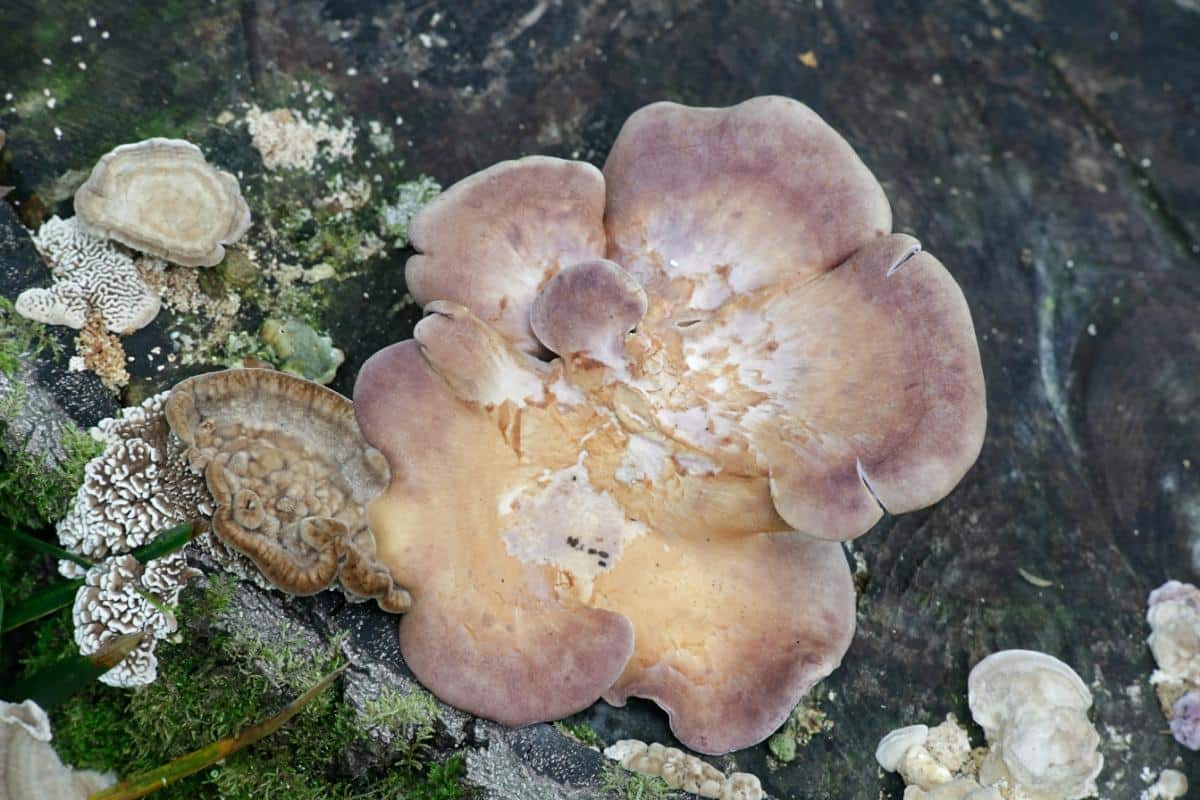
Lilac Oysterling Lookalikes
Oyster Mushroom (Pleurotus ostreatus)
The common oyster mushroom causes the most confusion. It has a grayish color instead of lilac but looks quite similar in shape. You can tell them apart by looking at their gills – oyster mushrooms have almost pure white gills. The lilac oysterling’s gills are purplish or tan with age.
Oyster mushrooms also have thicker cap flesh with a short but noticeable stem. Confusingly, the spore print of the oyster mushroom is pinkish, even possibly slightly purplish. And the lilac oysterling has white spores.
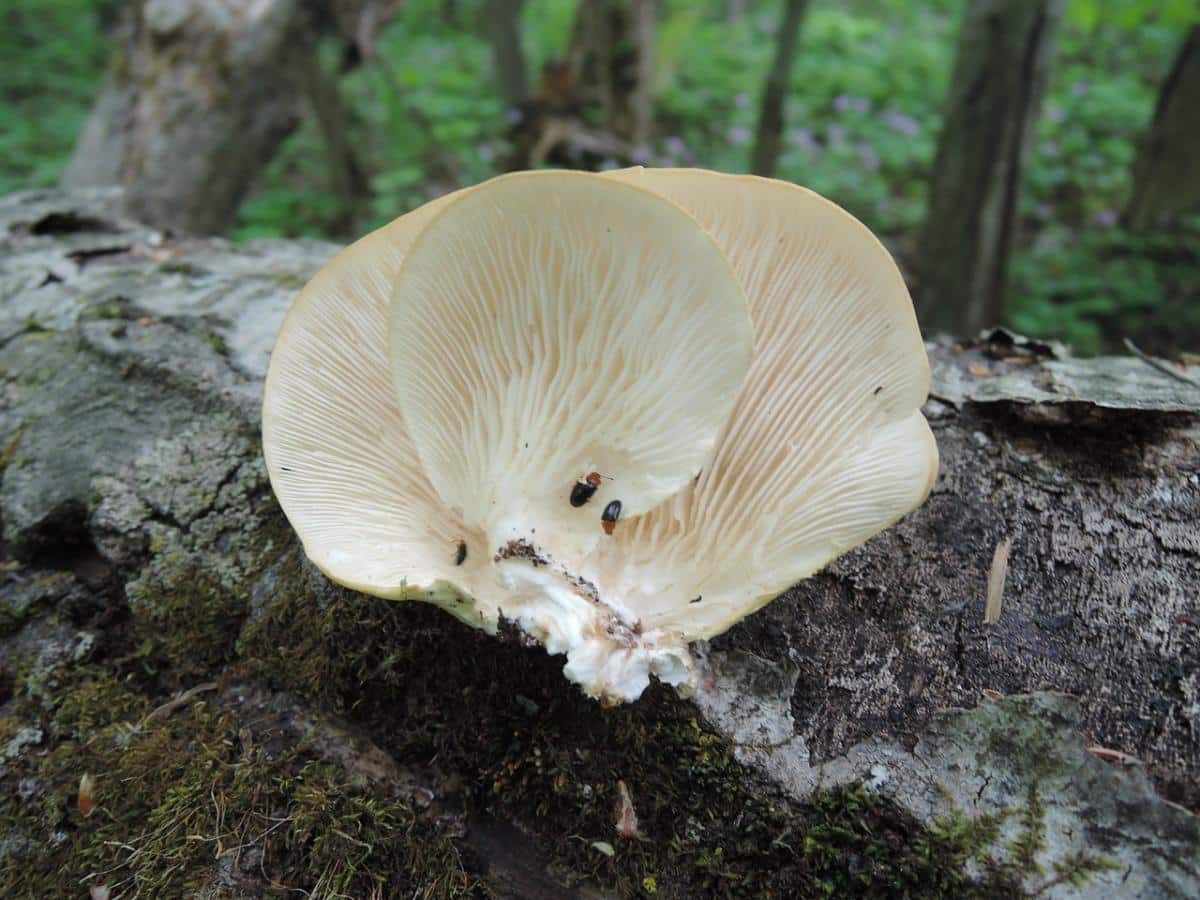
Angel Wings (Pleurocybella porrigens)
This white, oyster-like mushroom grows only on coniferous wood, which helps separate it from lilac oysterlings that prefer hardwoods. Angel wings‘ caps are very thin and almost see-through. They also have a distinct shape – they point upward like wings, while oysterlings spread outward like shells.
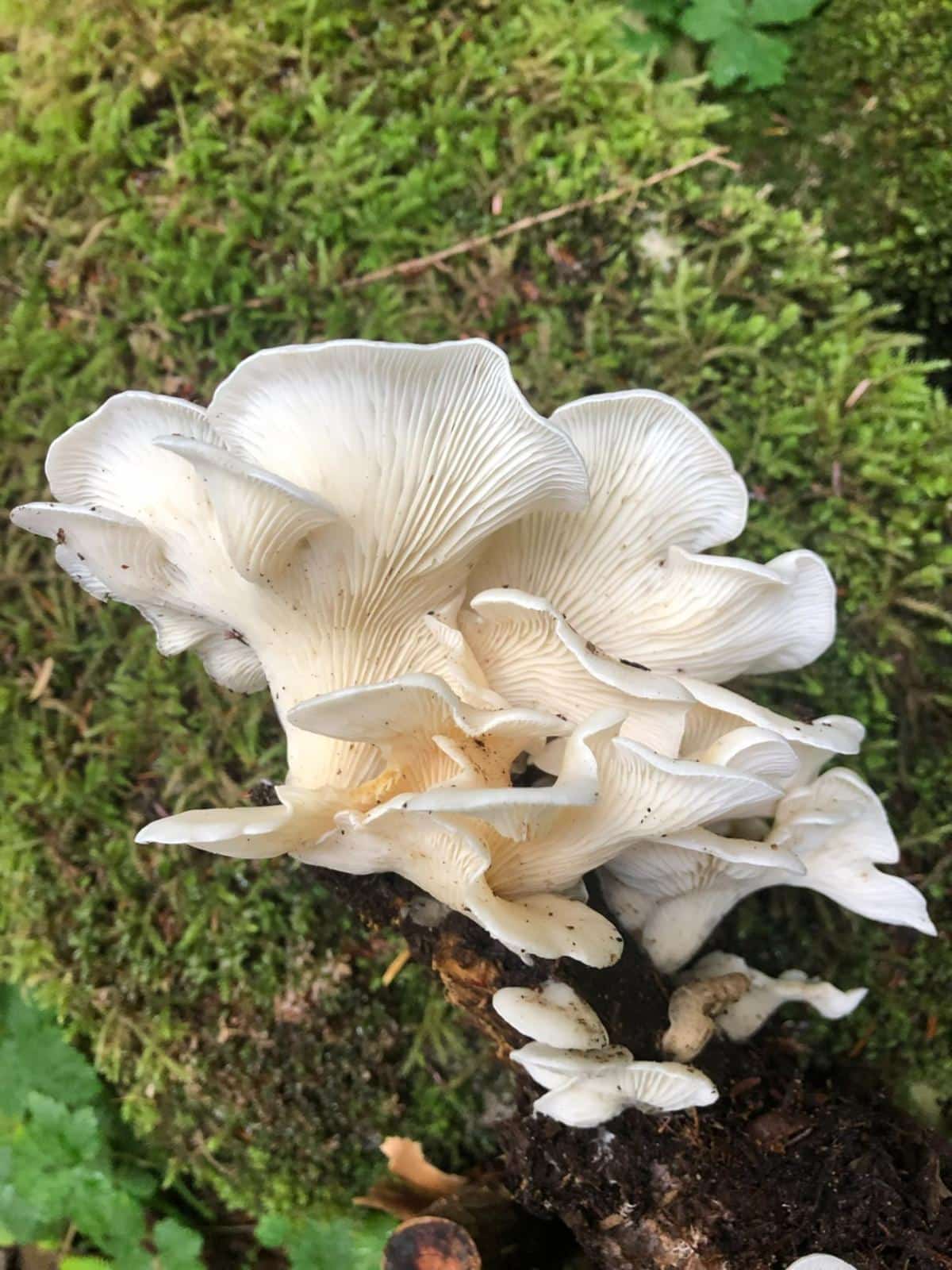
Hairy Panus (Panus neostrigosus/Panus lecomtei)
These species can be mistaken for faded lilac oysterlings. They are related and have similar coloring and appearance. The primary difference is that they have very hairy caps that do not become smooth with age. They are also known as the hairy oyster mushrooms.
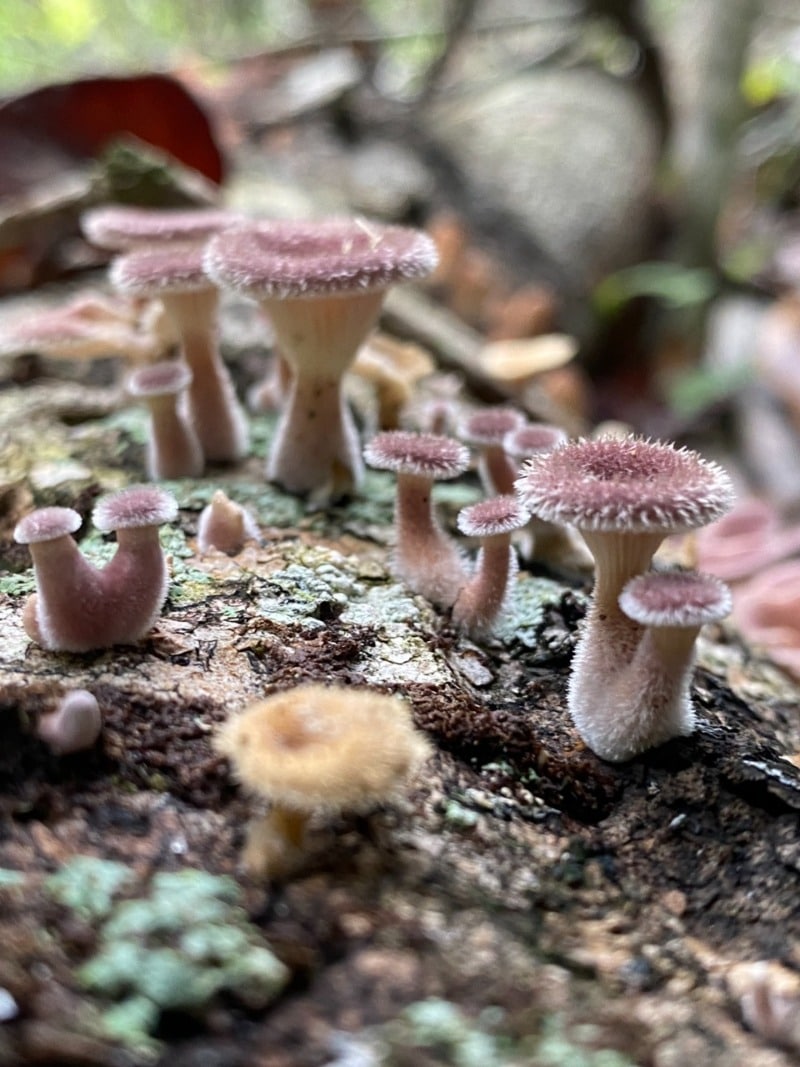
Panus lecomtei by Scott Johnson on Mushroom Observer
Lilac Oysterling Medicinal Uses
Scientists haven’t studied the medicinal properties of the lilac oysterling (Panus conchatus) as much as other mushroom species. Still, it has several interesting properties that deserve a closer look.
Panus conchatus produces a unique enzyme called laccase. Most laccases contain four copper molecules that give them a blue color. The lilac oysterling’s laccase stands out because it’s white. This special enzyme shows promise in industrial uses like pulp bleaching and cleaning wastewater, especially when removing phenolic compounds from manufacturing processes.
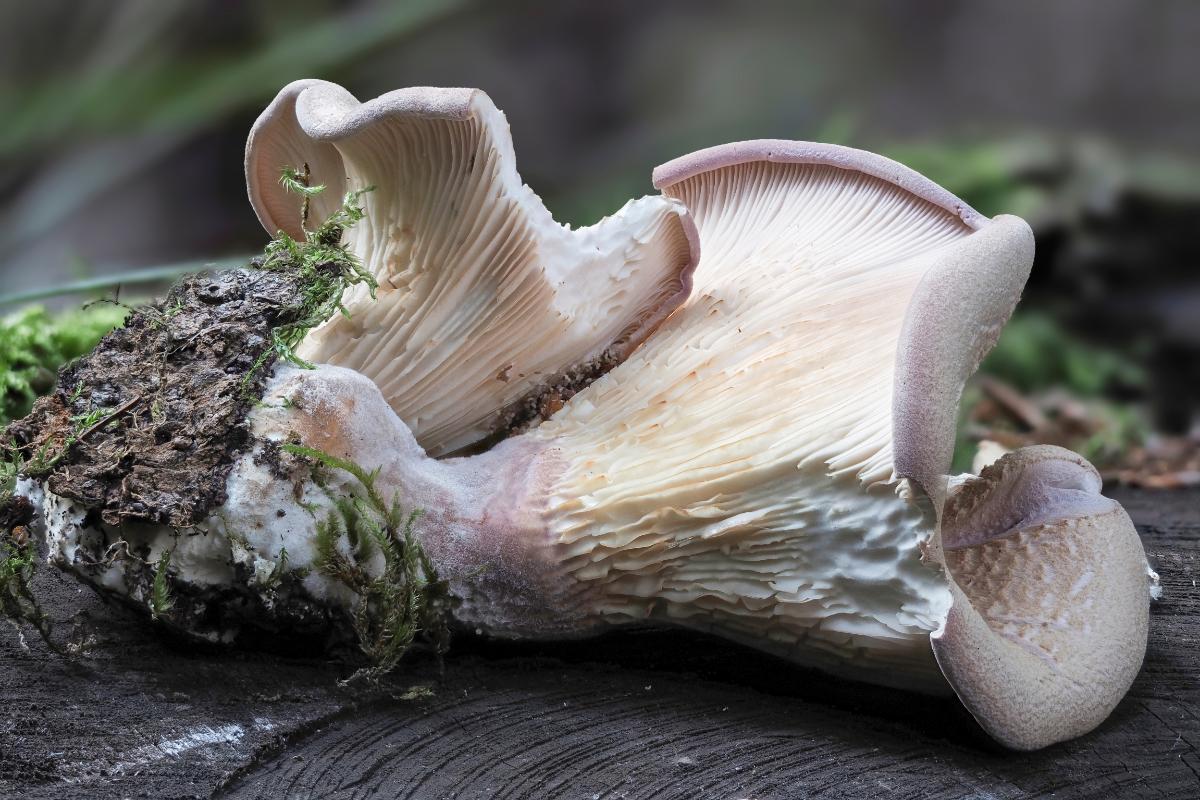
Cooking With Lilac Oysterling Mushrooms
Foragers and mushroom enthusiasts worldwide can’t seem to agree on the culinary value of this mushroom. European guides list this mushroom as inedible. The classification doesn’t stem from toxicity but comes from its tough, leathery texture.
The reports are that mature specimens don’t have much flavor and the texture is tough no matter which cooking method you try. And, the time and effort needed to prepare these mushrooms just don’t justify the results.
Chinese mushroom guides, though, list the lilac oysterling as perfectly edible. We couldn’t find any information about how it is prepared, but maybe there are ways to work around the mushroom’s tough texture?
Most foragers find the taste mild and unremarkable, so the tough texture makes it even less appealing. Others describe a bitter taste that further reduces its appeal. The mushroom’s aroma is its best feature, with people describing it as “somewhat sweet” and “nice.”
Most mushroom experts say lilac oysterling mushroom is “not recommended for consumption.” This mushroom falls into the “technically edible but not worth eating” category.
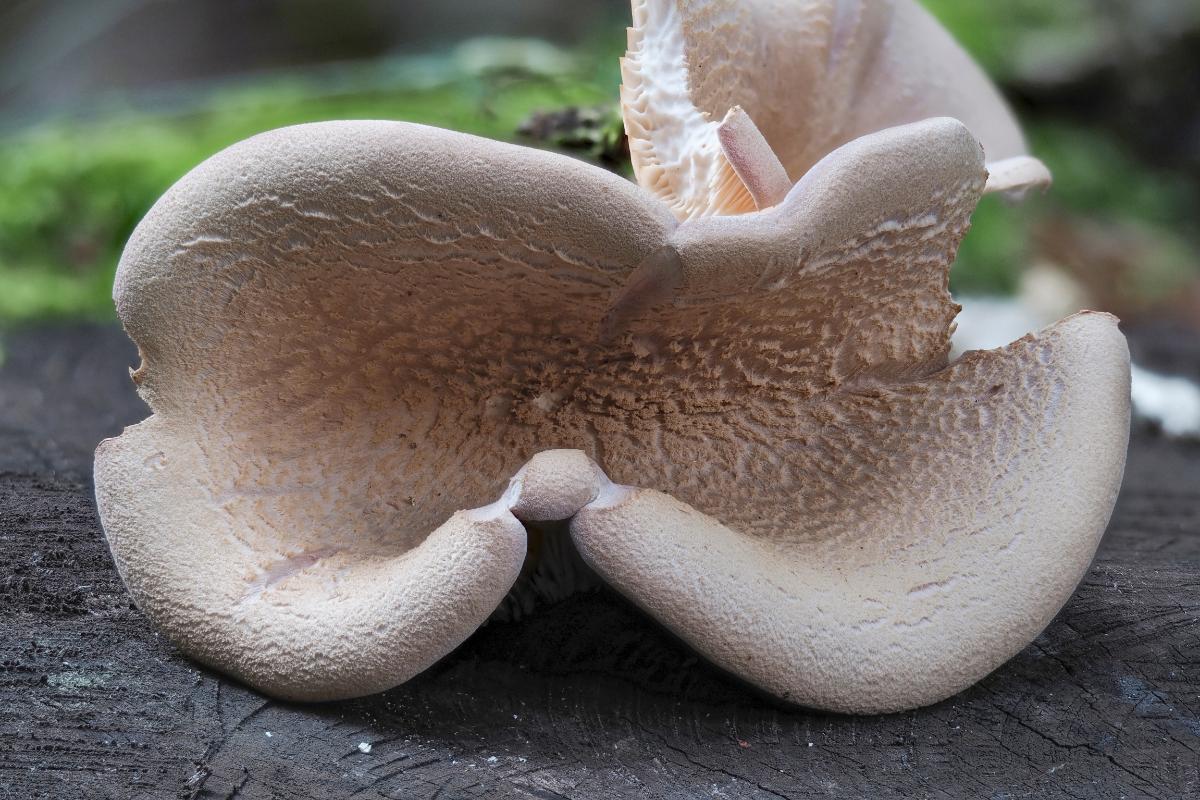
Common Questions About The Lilac Oysterling
Is the Lilac Oysterling mushroom edible?
The Lilac Oysterling technically edible but it is not recommended for eating because the flesh is tough and leathery. It also sometimes has a bitter taste.
Are there any poisonous mushrooms that look similar to the Lilac Oysterling?
The Lilac Oysterling isn’t toxic (or really edible), but it can be confused with the potentially dangerous Angel Wings mushroom. Pay attention to the details and always exercise caution while foraging mushrooms.
Does the Lilac Oysterling have any medicinal properties?
Research on the Lilac Oysterling’s medicinal properties is limited. However, it contains a unique white laccase enzyme that has shown potential for industrial applications. Like many mushrooms, it may also have antioxidant properties, but more research is needed.
When and where is the best time to find Lilac Oysterling mushrooms?
Lilac Oysterlings typically appear from spring through fall. Look for them on dead or dying hardwood trees, especially oak, beech, and poplar, in deciduous forests. They often grow in clusters or overlapping groups on fallen logs, stumps, or branches.

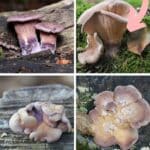

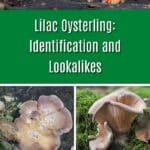
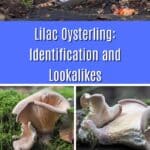




Leave a Reply